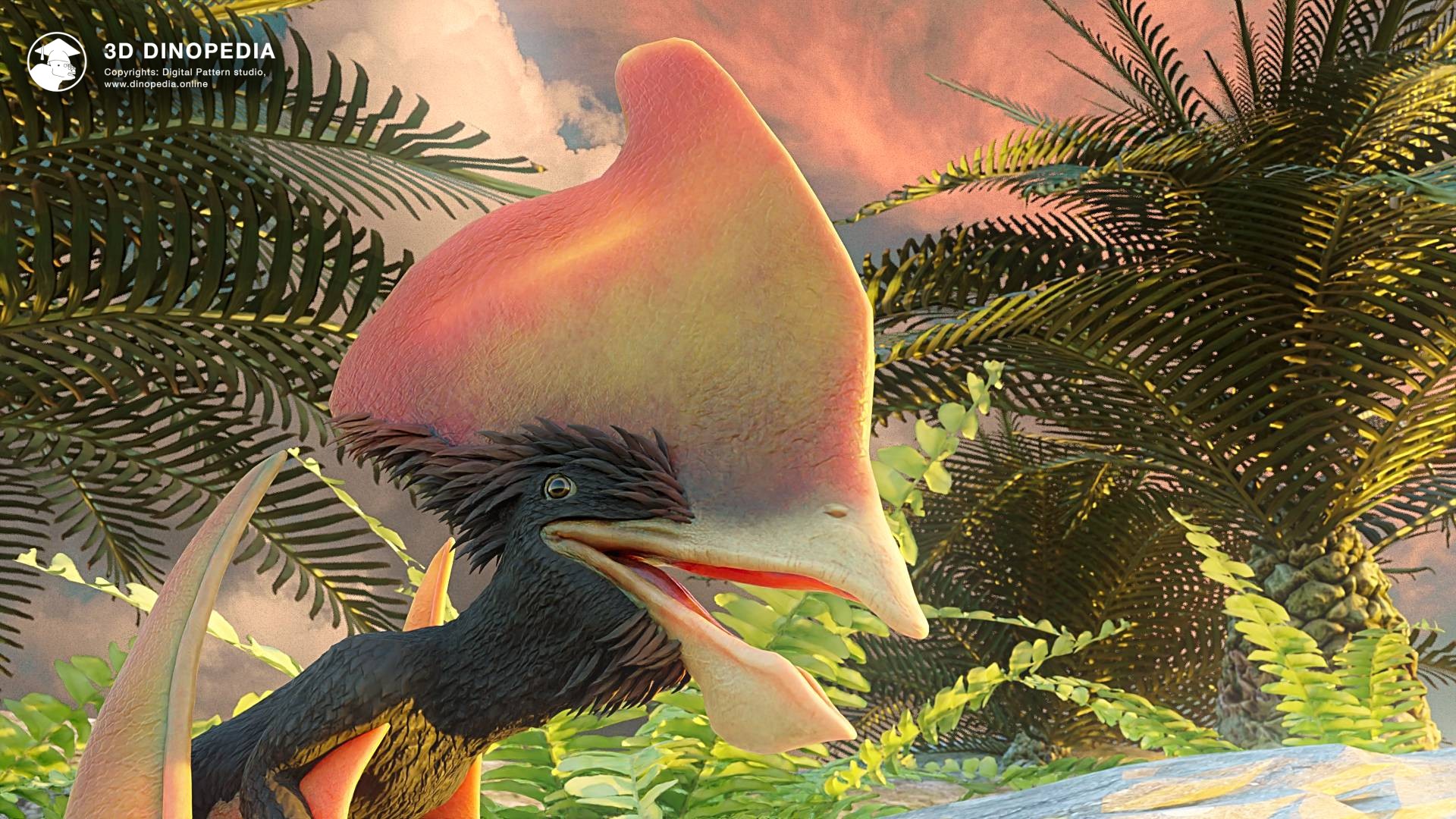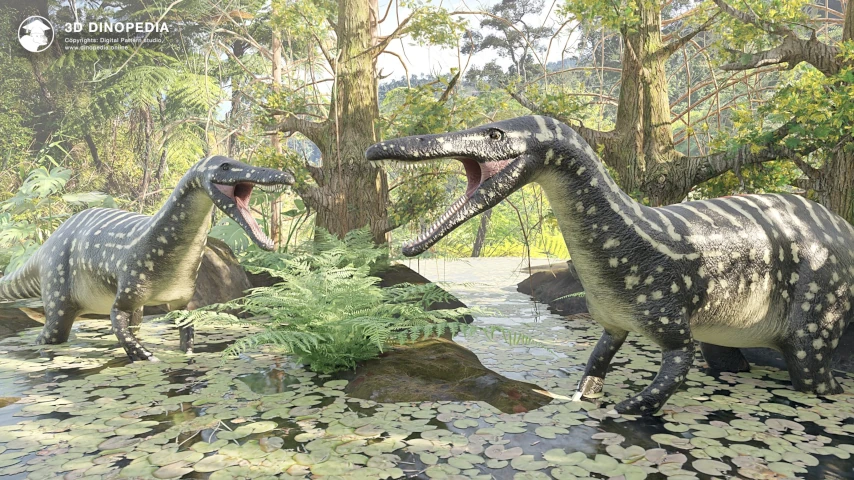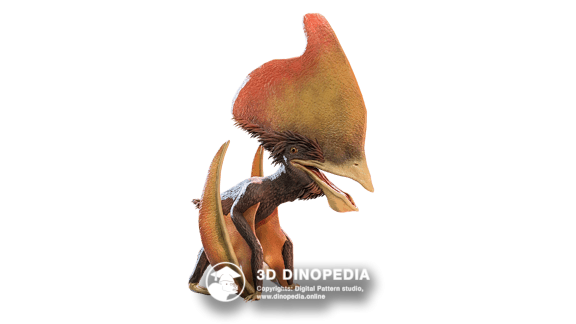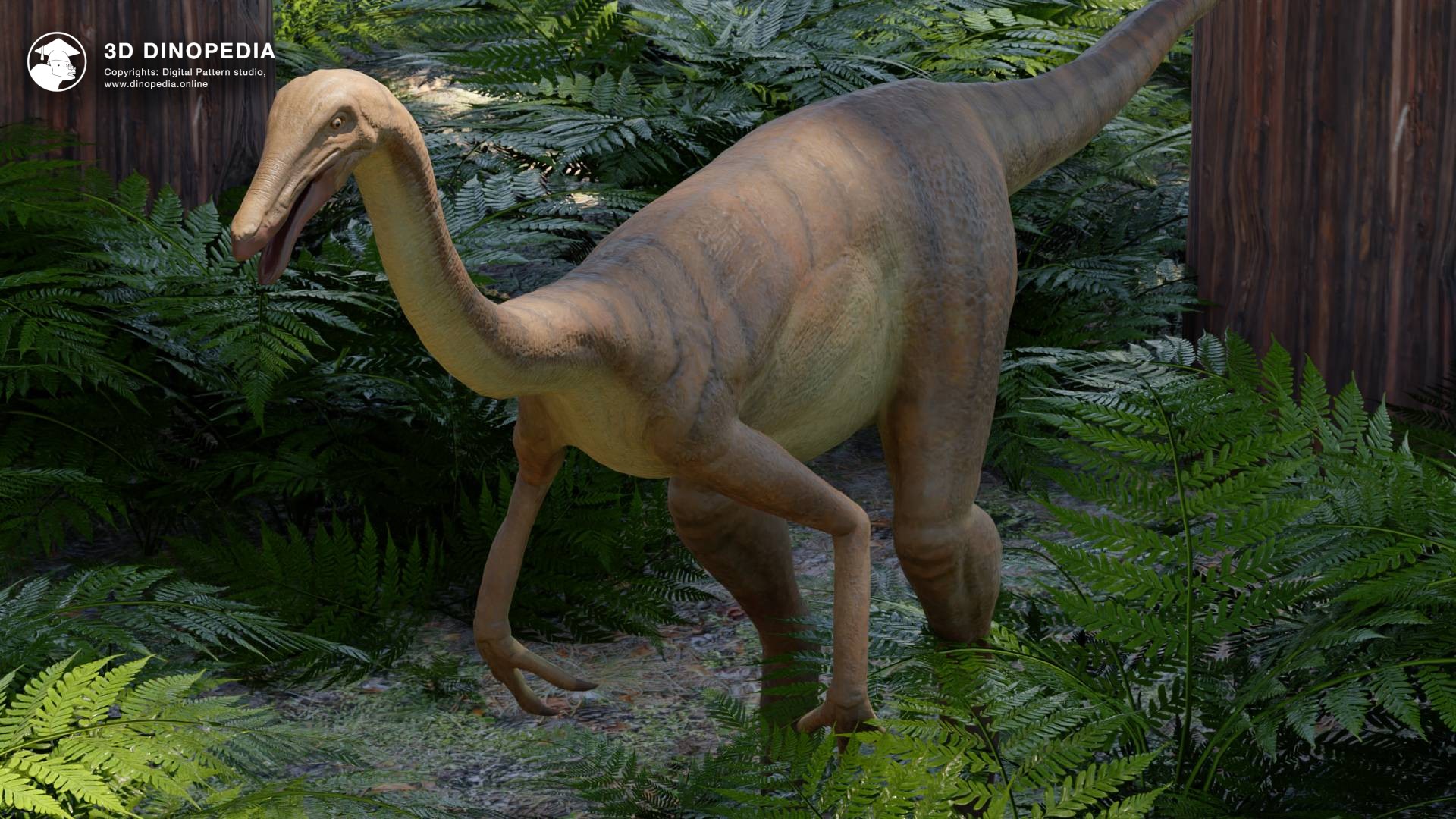Pterosaurs - Mesozoic trendsetters
08.03.2023 18:45
2571 views

Books with scaly, lizard-like dinosaurs are becoming increasingly rare on the shelves of stores. Even in cinema, dinosaurs are often "dressed" in extravagant feathered outfits, taking on bird-like features. This means only one thing - not only the scientific world, but also the general public are coming to realize that many (but not all!) dinosaurs were feathered. Of course, all users of the 3D Dinopedia know this, as we have so many feathered dinosaurs in our collection.
However, new paleontological research shows that dinosaurs and birds were not the only ones to have feathers. Pterosaurs were also feathered, and they didn't use their feathers for flying. Then what for? This mystery is unveiled by the discovery of a pterosaur in Brazil, researched in 2022. (By the way, this unique pterosaur is already available in our app!)
Feathers, undoubtedly, are an impressive evolutionary achievement, which was of immense importance for the subsequent success of birds. They appeared in various dinosaur species, starting from the middle of the Jurassic period. However, the early history of feathers still remains a mystery, and for a long time, scientists were bothered by the question: did other reptiles, not dinosaurs, have feathers? In recent years, there has been a lot of discussion about the possibility of pterosaurs - flying reptiles of the Mesozoic era - having feathers. Ever since the 19th century, prints of hair-like structures, called pycnofibers, that covered the bodies of many pterosaur species, including the Kazakh Sordes and Chinese Jeholopterus, have been known. In 2002, the scientific community agreed that pycnofibers are a very primitive type of feather.
In 2022, an international team of scientists published a paper describing a unique specimen of one of the pterosaur species with prints of primitive plumage. This specimen was found in Brazil, in the deposits of the Lower Cretaceous Crato Formation, and represents an incomplete skull of a Tupandactylus pterosaur with preserved skin and feather prints.
On the back side of the Tupandactylus skull, paleontologists were able to distinguish two types of feathers. The longer feathers, about 3 centimeters in length, grew at the base of the skull and were unbranched, resembling hair. They are very similar to the primitive feathers of Anurognathus pterosaurs and some dinosaurs, such as Therizinosaurus. However, higher up, at the far end of the crest, the pterosaur had more complex structured feathers, about 5 millimeters long. Until now, such feathers have only been observed in the primitive bird Praeornis and some dinosaurs, such as Sinornithosaurus. These feathers already had a central shaft from which secondary fibers emanated, creating a "fluffy" appearance.
Also, melanosomes were found in the feathers. These are tiny parts of the cell (organelles) containing pigment. It is the melanosomes that are responsible for the color of a certain part of the animal. The shape of the melanosome is closely related to its color. Therefore, even if this organelle has completely lost its color over millions of years, its shape allows the original color to be restored. It turned out that the pycnofibers at the base of the skull were black. Likely, most of the animal was of the same color. And the feathers from the top of the crest were bright red.
According to British paleontologist Michael J. Benton, the presence of feathers in dinosaurs and pterosaurs suggests that even their ancient Triassic ancestor could have been feathered. One can even make a bolder assumption: perhaps he was warm-blooded to some extent! With the development of feather cover, feathers began to perform a demonstrative function. The discovery of the new Tupandactylus specimen confirms that both dinosaurs and pterosaurs grew feathers not only for maintaining temperature, but also for "beauty.
This seemingly small discovery has a much larger significance for science. It not only allows us to better imagine the appearance of the Tupandactylus but also provides information about the purpose of feathers in Mesozoic lizards, allowing a better understanding of the evolution of plumage of all ancient reptiles. Further research and discoveries may shed even more light on this fascinating area of paleontology and help expand our knowledge of the Mesozoic world.
More detailed information about Tupandactylus can be found in the "animals" section. There you can evaluate its coloration, as well as study the features of its skeleton and muscles in detail.
The scientific article on the structure and color of Tupandactylus feathers was published in the journal Nature on April 20, 2022.
Cincotta A. et al. Pterosaur melanosomes support signalling functions for early feathers // Nature, №604, 684-688 pp."
Discussions







{{ count }} comments
You must login to write a comment